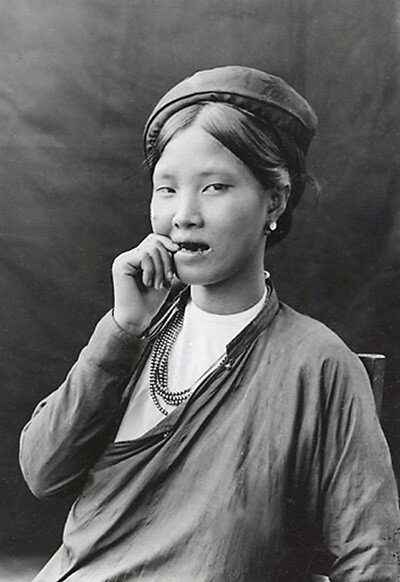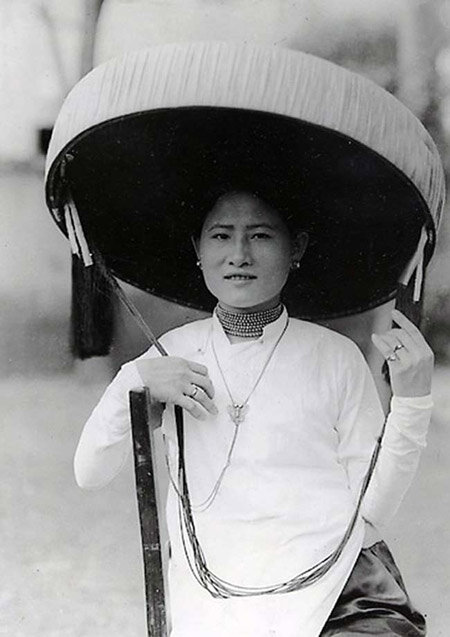Blackened Beauty, A Dyeing Tradition


How beauty identifies our heritage and culture.
Tooth Blackening was once considered a way to elevate the beauty of young unmarried Vietnamese women.
Before 1945, the tradition of blackened teeth was practiced in northern Vietnamese villages and mountain ethnic tribes. Young unmarried women between the ages of 16 to 20 were highly encouraged to blacken their teeth as a way to elevate their beauty. This practice was considered a sign of good luck to help young women find a husband. This age-old tradition not only served as beauty was also considered to help make teeth stronger.
It was once believed that black teeth were achieved by chewing a combination of lime, areca nut and betel leaf known collectively as betel nuts. However, the traditional process of blackening teeth was much more complex and arduous.
Teeth blackening process in Vietnam requires a special recipe that consists of lime juice, charcoal powder, coconut shell resin, and black alum. Before the process can start, both teeth and mouth need to be cleansed from the inside out until the surface of the teeth become smooth and shiny.
During the first three days, women are required to brush and clean their teeth using dry areca shells, raw salt, and charcoal powder. A day before the dyeing process commences, women must chew on lemons and wash their mouths using a mixture of lemon juice and white wine. This is the most painful process as the lips, gums, and tongue become unbearably swollen. The final stage involves holding the mixture together along with the black resin collected within old coconut shells. These old coconut shells are sun-dried and then burnt on a charcoal stove. After this, a black resin from within the shells is removed and applied to the teeth which result in another tooth enamel layer protecting the teeth.
Today tooth lacquering is no longer widely practiced however many tribes in Sa Pa still maintain traditional ancestral rituals in the name of beauty. You will discover that the Red Dao Tribe shaves their eyebrows and forehead or that the Black Hmong women grow their long hair, tied in specific wrappings and knot - beauty is as they say in the eyes of the beholder.
Such practices preserve tribes' unique heritage for generations to follow and allows travellers to tip-toe into a world that almost is at standstill.
